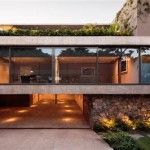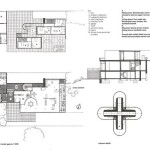Dutch Colonial House Plans 1930: Exploring the Architectural Essence
Dutch Colonial house plans embody a fusion of European and American architectural influences, particularly prevalent during the 1930s. These homes, characterized by their stately presence and charming details, continue to captivate homeowners today. Let's delve into the essential aspects that define Dutch Colonial house plans from this era.
Symmetrical Facade
Dutch Colonial homes showcase a symmetrical front facade, with a central entrance flanked by matching windows on both sides. This balance and proportion create a sense of order and elegance. The entrance typically features a covered porch supported by columns, often with a decorative pediment above.
Gabled Roof
The roof is a prominent feature of Dutch Colonial houses, featuring a steeply pitched gable roof with dormer windows. These windows, which extend outward from the roofline, provide additional natural light and ventilation to the upper floors. The gabled roof gives the home a distinctive silhouette and adds to its overall character.
Gambrel Roof
In addition to the gable roof, some Dutch Colonial houses also incorporate a gambrel roof, which has two slopes on each side, forming a "barn-like" shape. Gambrel roofs provide ample attic space, making them practical for storage or conversion into additional living areas.
Brick Construction
Many Dutch Colonial houses are constructed with red or brown brick, which lends a warm and inviting appearance. The brick exterior can be adorned with white painted trim around windows, doors, and eaves, creating a classic and aesthetically pleasing contrast.
Arched Doorways
Arched doorways are a signature feature of Dutch Colonial homes, adding a touch of sophistication to the entrance. The arches can be rounded or elliptical and are often supported by pilasters or columns. Arched doorways not only enhance the visual appeal but also provide a welcoming and grand entrance.
Fireplace
Dutch Colonial homes typically feature a fireplace as a focal point in the living room or family room. Fireplaces are often constructed with a mantelpiece made of wood or stone, adorned with decorative carvings or tiles. They serve as a source of warmth and create a cozy and inviting atmosphere.
Other Notable Elements
Other notable elements that contribute to the charm of Dutch Colonial house plans include:
- Bay windows that extend outward from the front facade, providing additional space and light.
- Shutters that adorn the windows, providing both privacy and a decorative touch.
- Porches that extend along the front or sides of the house, offering a shaded and inviting outdoor living space.
Conclusion
Dutch Colonial house plans from the 1930s continue to stand the test of time, offering a timeless combination of architectural elegance and functionality. Their symmetrical facades, gabled and gambrel roofs, brick construction, arched doorways, fireplaces, and other charming elements create homes that are both visually appealing and comfortable to live in. Whether you're seeking a historic home or simply appreciate the beauty of Dutch Colonial architecture, these house plans provide a lasting legacy of style and sophistication.

1930 Practical Homes Colonial House Plans Dutch

1930 Dutch Colonial Revival Elizabeth Montgomery Ward

Montgomery Ward Kit Homes 1930 Dutch Colonial Revival Sovereign

Style Spotting On Main Street Part 2 Dutch Colonial House Plans

1930s House Designs Colonial Plans Gambrel Style Dutch Homes

The Victoria Modern Dutch Colonial Revival Style Of 1930s Lewis Manufacturing Liberty Homes

1900 Sears Homes And Plans Dutch Colonial Revival Modern Home No 264b164 Shed Dormer House Vintage Barn Design

Elevate Your Space With Dutch Colonial Revival Design

1922 Clarendon By Bennett Homes Dutch Colonial Revival Style Gambrel Roof Kit Houses House Plans

What S In A Roofline Urban Omnibus








